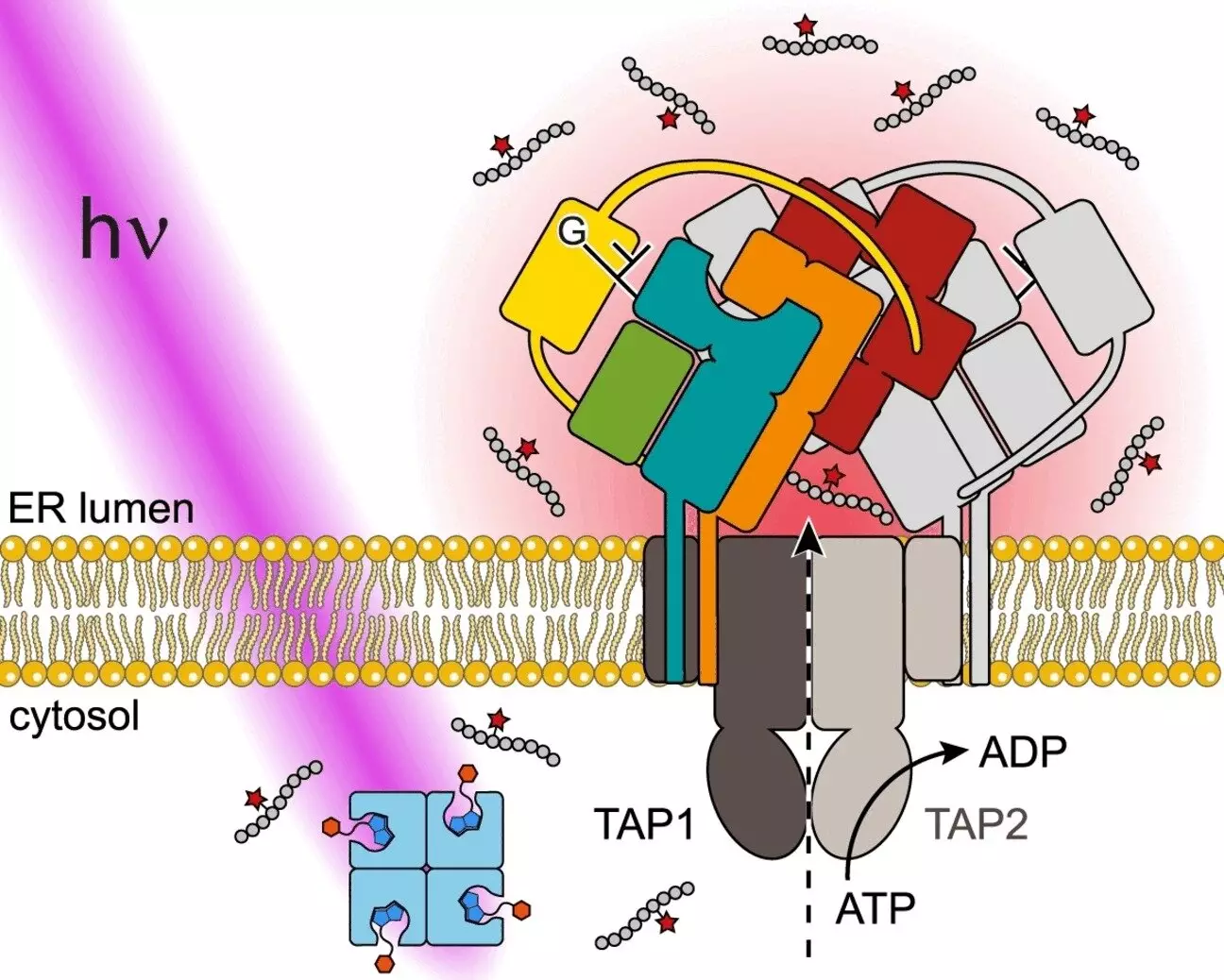The immune system plays a crucial role in the defense against pathogens and cancer cells by constantly monitoring and eliminating diseased cells. A recent study published in the journal Angewandte Chemie International Edition highlights the development of a novel approach to study antigen processing in real time using a photostimulated release system.
Antigen Processing and Presentation
In our cells, proteins are broken down into small peptide fragments and transported to the endoplasmic reticulum (ER) by the transporter associated with antigen processing (TAP). Within the ER, the peptide loading complex (PLC) regulates the loading of antigenic peptides onto major histocompatibility complex class I (MHC I) molecules. These peptides are then presented on the cell surface for immune surveillance.
Despite significant progress in understanding antigen processing, many mechanistic principles of antigen translocation and assembly of the PLC complex remain elusive. To address this gap, a team of researchers at the University of Frankfurt am Main in Germany, led by Ralph Wieneke and Robert Tampé, developed a photostimulated antigen release system for precise analysis of antigen flux.
The photostimulated antigen release system utilizes light to trigger the release of trapped antigens from a “caged” inactive state. This innovative approach allows for controlled and precise study of antigen processing dynamics in living cells. The system is based on a peptide derived from an HIV antigen, which is linked to a bulky protein called streptavidin via a biotin linker.
The peptide epitope is shielded from recognition by TAP in its caged state, but upon exposure to UV light, the linker is cleaved, releasing the epitope for recognition and transport across the ER membrane. This versatile system enables the study of antigen transport in various cellular contexts, including the TAP-dependent loading of MHC I in human lymphoma cells.
The development of the photostimulated antigen release system represents a significant advancement in the field of antigen processing research. By providing a precise and noninvasive method to study antigen flux, this system opens up new opportunities for investigating the complex mechanisms involved in antigen presentation.
Future studies using this system could shed light on the dynamics of PLC assembly, antigen translocation, and the quality control of peptide-MHC complexes. Moreover, the versatility of this approach paves the way for a deeper understanding of immune surveillance mechanisms and the development of novel immunotherapeutic strategies.
The use of photostimulated antigen release systems offers a powerful tool for unraveling the intricacies of antigen processing and presentation. This innovative technology has the potential to drive groundbreaking discoveries in immunology and contribute to the development of more effective strategies for combating infectious diseases and cancer.


Leave a Reply